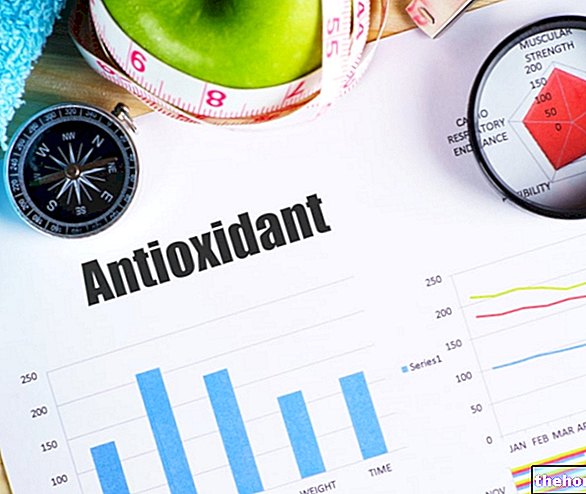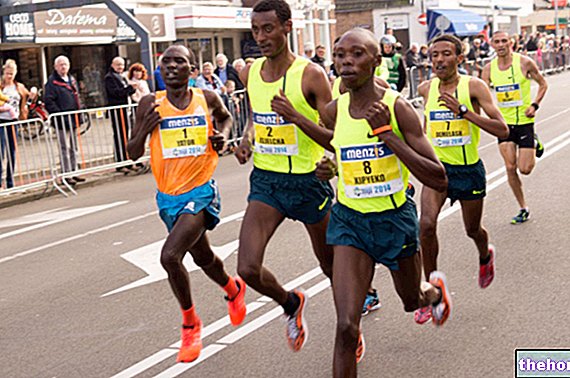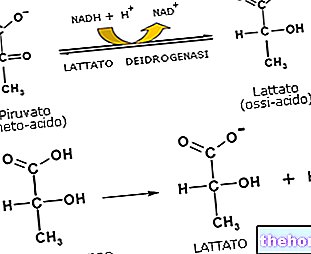Edited by Dr. Marco Siffi
Overtraining is a training imbalance that occurs when the physical activity practiced is too intense, so much so that the body is unable, in the recovery time, to eliminate the accumulated fatigue. This adaptive imbalance, also known as overtraining, causes a continuous state of psychophysical stress, which culminates in the staleness syndrome (refusal to train), damaging athletic performance and making the body more vulnerable to possible infections. It is possible to believe that an athlete unable to fully recover within 72 hours of maximum physical effort is suffering from overtraining syndrome. Overtaining is a phenomenon capable of affecting over 65% of athletes during their competitive career.
Some symptoms of overtraining include:
- Repeatedly poor performance that cannot be explained
- Feeling of fatigue, body aches, depression;
- Increased vulnerability to gastrointestinal infections and disorders;
- Sleep disturbances and weight loss;
- Overload injuries;
- Increased resting heart rate and blood pressure
- Changes in hematocrit;
- Changes in the rate of hemoglobin;
- Decreased testosterone level;
- Modification of the testosterone / cortisol ratio in favor of the latter.
When a professional athlete goes into overtraining, the problem must be immediately identified and addressed, to avoid endangering the competitive season. Although these situations are found mainly in competitive athletes, it is not uncommon to observe them also among amateur sportsmen and fitness enthusiasts who train hard. There are some metabolic parameters frequent in overtraning, such as the increase in ceruloplasmin, urea and CPK. In endurance athletes there is mild anemia, leukopenia, iron deficiency, reduced serum albumin, hypoglycemia, hypotryglyceridemia, low LDL and VLDL, increase in plasma levels of norepinephrine, with decreased basal excretion of catecholamines. It is possible to carry out some laboratory tests for the diagnosis of overtraining, such as, for example, the search for the concentration of serum glutamine, which constantly decreases in overtraning, or the dosage of Salivary IgA, considered the best marker of impaired immune status, sedimentation rate, gamma globulin content, CK and magnesium content.
Another very important factor to consider is the psychological one; in fact too intense training can induce the athlete to feelings of inadequacy, discouragement up to depression and chronic fatigue syndrome. For this reason, tests capable of measuring the psychological state and the level of mood are useful. In general, at the base of almost all the phenomena of overtraining there is an incorrect dosage of the relationship between training intensity and recovery. In the case of competitive athletes, however, the risks can also derive from the competition calendars, from the wrong planning of the sporting season and from the lifestyle: lack of sleep, repeated stress, eating errors can create the conditions to determine the onset of the syndrome. .
Recovery planning to prevent overtraining
The rational increase in workloads causes positive functional changes, that is the so-called supercompensation. However, the high volumes and intensity of current training, to which an increasing number of races are added, pose problems for all those who have to plan the training. relevant, especially with regard to an optimal relationship between training and competition loads. When it comes to recovery measures, it is necessary to distinguish passive measures, in which the athlete is subjected to interventions such as physiotherapy, hydrotherapy, thermotherapy, electrostimulation and acupuncture, from active ones, in which the athlete practices light aerobic work, muscle stretching, autogenic training. The recovery between different frequencies and training units and after a competition should be done through pauses that allow the body to recover completely. Too often, however, the alternation of commitments and recoveries is underestimated, leading to the occurrence of fatigue and overtraining phenomena. The planning of a physiological recovery program must be customized for each athlete, taking into consideration a whole series of relative aspects. to the life habits of the subject.
The objectives of the physiological recovery measures must be aimed at:
- Reduction of the catabolic period favoring the anabolic one
- Acceleration of the reestablishment of body homeostasis
- Rebalancing of the immune and hormonal state
- Prevention of injuries from repeated microtrauma
- Elimination of contractures, states of tension and pain
- Restoration of energy supplies
In the elaboration of a correct recovery plan, it is necessary to consider all those elements that can favor body homeostasis, for example:
- proper planning of workloads
- renounces competitions and training during illnesses and injuries
- general physical and mental conditions of the athlete
- information reported by the athlete
It is important to know that the tissues and the fatigue reaction processes have different recovery times, as reported in tables 1 and 2.
Type of training
Recovery time
Extensive resistance
12 hours
Resistance intensive
24 hours
Strength resistance
24 hours
Maximum strength training
36 hours
Table 1 Muscle recovery times in athletes (from Winning fatigue, Sport & Medicine, 2004).
Process
Recovery time
Reconstruction of creatine phosphate reserves
4-5 minutes
Acid-base state balance and lactate decrease
30 minutes
Transition from catabolism to anabolism
90 minutes
Hepatic glycogen reconstruction
24 hours
Restoration of contractile proteins
4-5 days
Table 2 Regeneration times in recovery processes (from Winning the fatigue, Sport & Medicine, 2004).
Once all the factors listed above have been considered, it is important to establish which forms of recovery are most suitable for the "fatigued athlete." The application of the different measures must take place in the recovery phase itself, if not even in the supercompensation phase.
Among the main forms of recovery are to remember:
- light aerobic work, to produce endorphins and eliminate metabolic waste;
- muscle stretching, to eliminate motor imbalances;
- anti-fatigue massage, to restore the right muscle tone;
- thermotherapy, electrotherapy and acupuncture;
- integration of liquids lost during exercise and essential nutrients for restoring energy supplies;
There are also important factors such as the psychological climate that is created within the group, the relationships that are established with the coach and with the teammates, the emotional characteristics of the athlete, a correct dietary intake before and during the competition or "work out. In conclusion, please note that training or competition participation stimuli and recovery measures represent a unitary process and must consequently be considered as a global system. Only in this way can a safe tool be available for controlling and regulating performance skills, reactions to recovery and adaptations to stimuli.
Bibliographical references:
. Baum M., Liesen H. - Sport und Immunsystem. Othopäde 1997; 26: 976-980.
. Boccia G., Liguori G., Limoncelli F. L "hygiene in changing rooms. Medicine of Sport 2002,55: 195-206.
. Calligaris A. The sciences of training Ed. Società Stampa Sportiva, Rome, 1997.
. Ghizzo M. Overcoming fatigue, Sport & Medicine, 2004,5: 37-45.
. Kentta G., Hassmen P. Overtraining and recovery. A conceptual model. Sports Medicine 1998; 26:31.
. McKenzie DC. Markers of excessive exercise. Can J Appl Physiol 1999; 24:66
. Rossi R. et Al. Overtraining (overtraining syndrome) and free radicals. Sports Medicine, 1999, 52: 159-163.
. Sassi A. Training and Overtraining. The bases for knowing and preventing overtraining. Edi-ermes, Milan, 1998.




























